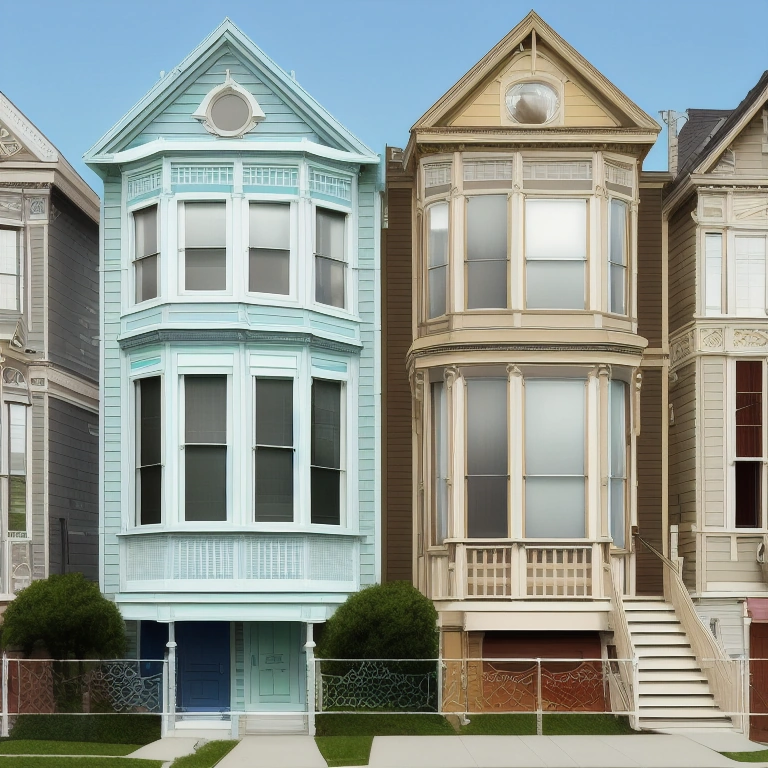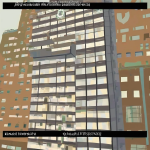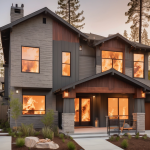Choosing the Right Windows for Your San Francisco Home: Style, Energy Efficiency, and Cost Considerations
San Francisco Windows: A Homeowner’s Guide
San Francisco, a city celebrated for its iconic Victorian architecture, stunning bay views, and deep-rooted commitment to sustainability, presents unique challenges and opportunities when selecting windows for your home. The city’s diverse microclimates, which can range from foggy, damp coastal conditions to surprisingly warm, sun-drenched inland areas within a few miles, necessitate San Francisco windows that can withstand a wide array of weather conditions while simultaneously maximizing energy efficiency. This introductory guide delves into the essential factors that San Francisco homeowners must consider when choosing the right windows, striking a balance between aesthetic appeal, optimal energy performance, and cost-effectiveness.
Whether you reside in a classic Victorian, a modern condominium, or a charming bungalow, understanding the nuances of window selection is paramount for enhancing your home’s comfort, increasing its overall value, and reducing its environmental footprint, making it a crucial aspect of any San Francisco home improvement project. Selecting the best windows for San Francisco homes requires careful consideration of the city’s unique environmental factors and building codes. Given California’s stringent Title 24 energy efficiency standards, San Francisco windows must meet specific requirements for U-factor and Solar Heat Gain Coefficient (SHGC).
These ratings measure how well a window insulates and blocks solar heat, respectively. For example, homes closer to the coast might prioritize windows with excellent insulation to combat the persistent fog and cool temperatures, while those in warmer inland areas may benefit more from windows with a low SHGC to minimize solar heat gain and reduce air conditioning costs. Investing in energy-efficient windows San Francisco not only ensures compliance with local regulations but also translates into significant long-term savings on energy bills, making it a financially sound decision for homeowners.
Furthermore, the architectural style of your San Francisco home plays a significant role in window selection. Victorian homes, known for their intricate detailing and historical charm, often feature double-hung or casement windows that complement their classic aesthetic. Bay windows San Francisco, a hallmark of the city’s architecture, provide panoramic views and abundant natural light, but require careful planning to ensure energy efficiency. Modern homes, on the other hand, may benefit from larger, more contemporary window designs that maximize natural light and offer sleek, minimalist appeal. When undertaking window replacement San Francisco, it’s essential to work with experienced window contractors San Francisco who understand the city’s unique architectural styles and building codes. These professionals can guide you in selecting the right window styles, materials, and installation techniques to enhance your home’s beauty, comfort, and value. Properly installed windows not only improve aesthetics but also contribute to better insulation and energy savings.
Window Styles for San Francisco Homes: Matching Architecture and Function
San Francisco’s architectural landscape is a tapestry of styles, each dictating unique window requirements. Victorian homes, a defining feature of the city, often showcase double-hung windows. These windows are celebrated for their classic aesthetic, ease of ventilation, and ability to complement the intricate detailing characteristic of Victorian architecture. Bay windows, another hallmark of San Francisco architecture, provide panoramic views and flood interiors with natural light. These projecting windows not only enhance the aesthetic appeal of a home but also increase its square footage, making them a desirable feature in the competitive San Francisco real estate market.
When considering window replacement San Francisco, homeowners should prioritize maintaining the architectural integrity of their properties while also enhancing energy efficiency. Modern homes, on the other hand, may benefit from casement windows, which offer a sleek, contemporary look and excellent energy efficiency due to their tight seal when closed. Picture windows are ideal for maximizing views in homes with stunning vistas, particularly those overlooking the bay or the city skyline. Awning windows, hinged at the top and opening outward, are well-suited for areas prone to rain, allowing for ventilation even during inclement weather.
Selecting the best windows for San Francisco homes involves balancing aesthetic preferences with practical considerations like weather resistance and energy performance. San Francisco windows must withstand both coastal fog and intense sunlight, making material choice and glazing options critical. Beyond these common styles, consider the specific needs of your property and neighborhood. For example, homes in historic districts may have restrictions on window styles to preserve the area’s character. When undertaking San Francisco home improvement projects involving window replacement, it’s crucial to research local regulations and obtain necessary permits.
Furthermore, prioritize energy-efficient windows San Francisco to comply with California’s Title 24 standards. These Title 24 windows are designed to minimize energy consumption, reducing utility bills and contributing to a more sustainable environment. Consulting with experienced window contractors San Francisco can provide invaluable guidance in navigating these complexities and ensuring a successful window installation San Francisco project. They can assess your home’s specific needs, recommend appropriate window styles and materials, and ensure proper installation for optimal performance.
Energy Efficiency: Meeting California’s Title 24 Standards
In California, energy efficiency isn’t merely a suggestion; it’s the law. California’s Title 24 Building Energy Efficiency Standards set mandatory energy performance benchmarks for windows, primarily focusing on U-factor and Solar Heat Gain Coefficient (SHGC). The U-factor quantifies the rate of heat transfer through a window; consequently, lower U-factors signify superior insulation, crucial for maintaining comfortable indoor temperatures year-round in San Francisco’s often unpredictable climate. For example, older San Francisco windows, particularly in Victorian homes, often have high U-factors, leading to significant heat loss during the winter months and increased heating bills.
Upgrading to Title 24 windows can dramatically improve a home’s energy efficiency. SHGC, on the other hand, measures the fraction of solar radiation admitted through a window. Lower SHGC values are highly desirable in warmer climates, as they minimize solar heat gain and reduce cooling costs. This is particularly relevant for San Francisco homes that experience direct sunlight, even on foggy days. Selecting the best windows for San Francisco homes involves carefully balancing U-factor and SHGC to optimize energy performance based on the home’s orientation and microclimate.
Ignoring SHGC can lead to uncomfortable hot spots within a home and increased reliance on air conditioning, even in San Francisco’s mild summers. Window contractors San Francisco are well-versed in these considerations. Investing in energy-efficient windows San Francisco offers substantial benefits, including reduced energy bills, enhanced indoor comfort, and a smaller environmental footprint. Look for windows with Energy Star certification, a reliable indicator of energy performance, and consult with a window expert to ensure your window selection meets Title 24 requirements.
For instance, many older San Francisco homes with single-pane Victorian windows or inefficient bay windows San Francisco are prime candidates for window replacement San Francisco. Beyond product selection, proper window installation San Francisco is paramount to achieving optimal energy performance. Even the most energy-efficient windows will underperform if not installed correctly, leading to air leaks and thermal bridging. Therefore, choosing experienced and certified window contractors San Francisco is essential for any San Francisco home improvement project involving window replacement. Furthermore, the aesthetic considerations of replacing Victorian windows must be carefully balanced with energy efficiency goals, often requiring specialized expertise.
Cost Considerations: Initial Investment vs. Long-Term Savings
The cost of window replacement in San Francisco can vary significantly depending on the window style, material, size, and installation complexity. While initial investment is a key consideration, it’s crucial to factor in long-term savings from reduced energy consumption. Energy-efficient windows can pay for themselves over time through lower heating and cooling costs. Explore available rebates and incentives from utility companies and government programs to help offset the initial cost. Consider a cost-benefit analysis that includes initial investment, long-term energy savings, and potential rebates to make an informed decision.
Obtaining multiple quotes from reputable window contractors is essential to ensure you receive competitive pricing. When evaluating the true cost of San Francisco windows, particularly energy-efficient windows San Francisco, homeowners should consider the resale value impact. Upgrading to Title 24 windows not only reduces monthly energy bills but also enhances the appeal of the property to prospective buyers in the competitive San Francisco real estate market. Features like double-paned glass, low-E coatings, and proper window installation San Francisco are increasingly sought after by discerning buyers who prioritize sustainability and long-term cost savings.
Therefore, viewing window replacement San Francisco as an investment, rather than a mere expense, can yield significant returns when it’s time to sell. Beyond the direct financial benefits, selecting the best windows for San Francisco homes involves considering the nuanced interplay between architectural style and energy performance. For instance, replacing Victorian windows with historically accurate, yet energy-efficient, replicas can be more expensive upfront but preserves the home’s character while improving its thermal performance. Similarly, bay windows San Francisco, prized for their aesthetic appeal and expansive views, require careful consideration of glazing options and framing materials to maximize energy efficiency without compromising their iconic design.
Engaging with experienced window contractors San Francisco who understand both historic preservation and modern energy standards is paramount to achieving a balance between form and function. Furthermore, homeowners should proactively investigate financing options and tax credits specifically designed for San Francisco home improvement projects focused on energy efficiency. Certain lenders offer preferential rates for green home improvements, while state and federal tax credits can further reduce the overall cost of upgrading to energy-efficient windows. By strategically combining rebates, incentives, and favorable financing terms, homeowners can significantly mitigate the initial financial burden of window replacement and accelerate the payback period through reduced energy consumption. Thorough research and proactive planning are essential to maximizing the available financial resources and making informed decisions about San Francisco windows.
Window Materials: Wood, Vinyl, Aluminum, and Fiberglass
Window materials are pivotal in determining a window’s longevity, aesthetic appeal, and energy performance, each presenting a unique set of advantages and disadvantages. Wood windows, prized for their classic elegance and superior insulation properties, remain a popular choice, particularly for preserving the historical character of Victorian homes. However, their susceptibility to moisture damage and the necessity for regular painting and sealing can present ongoing maintenance challenges, especially in San Francisco’s often damp climate. Vinyl windows offer a compelling alternative, lauded for their affordability, minimal upkeep, and impressive energy efficiency.
Their resistance to rot and warping makes them well-suited for San Francisco’s variable weather conditions, contributing to their widespread adoption in window replacement San Francisco projects. Aluminum windows, known for their strength and durability, find application in modern designs, but their higher thermal conductivity can compromise energy efficiency compared to wood or vinyl, potentially impacting heating and cooling costs. Fiberglass windows represent a premium option, effectively merging the structural integrity of aluminum with the insulating capabilities of wood, resulting in exceptional performance and longevity.
Selecting the optimal window material necessitates a careful evaluation of factors such as budget constraints, desired aesthetic, and anticipated maintenance demands. Energy-efficient windows San Francisco are a must. For instance, while wood windows may perfectly complement the architectural style of a Victorian property, the long-term maintenance costs could outweigh the initial aesthetic benefits. Conversely, vinyl windows offer a cost-effective and low-maintenance solution, but their aesthetic versatility may be limited compared to wood or fiberglass. Aluminum windows, while durable, may require additional thermal breaks to enhance energy efficiency and mitigate heat transfer.
Fiberglass windows, while representing a higher initial investment, offer a compelling combination of durability, energy efficiency, and aesthetic flexibility, potentially yielding long-term cost savings and enhanced comfort. San Francisco home improvement projects should carefully consider the trade-offs between these materials. Furthermore, navigating California’s stringent Title 24 Building Energy Efficiency Standards requires careful consideration of window material properties and performance metrics. Title 24 windows must meet specific U-factor and Solar Heat Gain Coefficient (SHGC) requirements, influencing the choice of window materials and glazing options.
For example, low-emissivity (Low-E) coatings can significantly reduce heat transfer and improve SHGC ratings, making aluminum windows more compliant with Title 24 standards. Similarly, the use of insulated frames and multiple panes of glass can enhance the energy efficiency of wood and vinyl windows. Understanding these regulatory requirements and material properties is crucial for ensuring that window replacement San Francisco projects meet energy efficiency standards and qualify for potential rebates or incentives. Engaging experienced window contractors San Francisco can provide valuable guidance in selecting compliant and high-performing windows.
For bay windows San Francisco, ensure the framing material is robust enough to handle the extended structure. Ultimately, the best windows for San Francisco homes are those that strike a balance between aesthetic appeal, energy efficiency, durability, and cost-effectiveness, while also complying with local building codes and regulations. In San Francisco’s diverse climate, resistance to moisture, wind, and temperature fluctuations is paramount. Consulting with local experts in window installation San Francisco can provide valuable insights into the performance characteristics of different window materials and help homeowners make informed decisions that align with their specific needs and preferences. Considering the long-term implications of window material selection on energy consumption, maintenance costs, and property value is essential for maximizing the return on investment in San Francisco windows.
Conclusion: Making the Right Choice for Your San Francisco Home
Choosing the right windows for your San Francisco home is a significant investment that can enhance your home’s comfort, value, and energy efficiency. By carefully considering style, energy performance, cost, and material options, you can make an informed decision that meets your specific needs and preferences. Consult with local San Francisco window installation experts to receive personalized advice and ensure proper installation. Real-world examples of successful window replacements in the city demonstrate the transformative impact of energy-efficient windows on homeowners’ lives.
Prioritizing energy efficiency not only benefits your wallet but also contributes to San Francisco’s commitment to sustainability. For San Francisco homeowners, selecting energy-efficient windows is more than just a home improvement project; it’s a strategic decision impacting property value and long-term savings. Consider, for instance, a Victorian home in Pacific Heights upgrading from single-pane windows to double-paned, low-E glass windows. This not only preserves the historical aesthetic but also significantly reduces energy consumption, potentially increasing the home’s resale value by showcasing a commitment to modern energy standards.
Moreover, compliance with California’s Title 24 regulations is non-negotiable, and choosing certified windows ensures adherence to these stringent energy performance requirements, avoiding potential penalties during property transactions. Engaging experienced window contractors in San Francisco is crucial for navigating these complexities and ensuring a seamless, code-compliant installation. The benefits of investing in the best windows for San Francisco homes extend beyond mere energy savings; they directly influence indoor comfort and noise reduction. Imagine a resident in a bustling neighborhood like North Beach replacing old, drafty windows with soundproof, energy-efficient models.
The result is a quieter, more comfortable living space, shielded from the city’s vibrant sounds and temperature fluctuations. Furthermore, energy-efficient windows reduce condensation, preventing mold growth and improving indoor air quality, a significant concern in San Francisco’s often damp climate. These improvements collectively enhance the overall living experience and contribute to a healthier home environment, making it a more attractive and valuable asset. Bay windows in San Francisco, for example, can be retrofitted with high-performance glazing to maximize views while minimizing heat loss.
Ultimately, the decision to invest in window replacement in San Francisco should be viewed through a holistic lens, considering both immediate costs and long-term advantages. While the initial expense may seem daunting, the cumulative savings on energy bills, coupled with the potential increase in property value and improved quality of life, make it a worthwhile investment. Homeowners should explore available rebates and incentives for energy-efficient upgrades, further offsetting the initial cost. By partnering with reputable window contractors in San Francisco and carefully evaluating window styles, materials, and energy performance ratings, homeowners can make informed choices that create a more comfortable, sustainable, and valuable living space. Investing in energy-efficient windows San Francisco, is an investment in the future.


